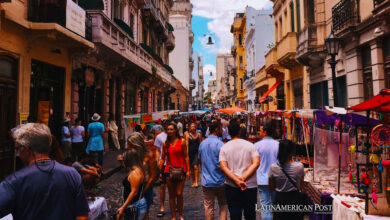5 key points of the historic agreement between Mercosur and the EU
Listen to this article
The signing of the agreement between these two economic powers is the result of an arduous work of more than 20 years. How does it work?

Like any bilateral agreement between blocks, there are several key points for achieving the minimum conditions that can satisfy the parties. The agreements can be promoted by countries, people or high-level summits. However, you can also find positions of economic sectors that do not agree with the commercial aspect. In the case of the agreement between Mercosur and the EU, there are five points that should be considered.
Leer en español: 5 puntos clave del histórico acuerdo entre Mercosur y la UE
1. As the newspaper La Nación explains, one of the most important scenarios to seal the biggest trade agreement between Europe and Latin America has always been the G-20 meetings. This summit reuniting powerful countries was always the perfect scenario to smooth out rough edges, reach technical, political and commercial agreements. It has been useful above all to gather the signing member countries of this agreement, since out of this scenario it was quite difficult to reach consensus for holding summits and meetings between the parties. It should be noted that the announcement of the creation of the world's largest free trade zone was made at the G-20 summit in 2019.
Día histórico, ya es oficial: el #Mercosur y la UE alcanzaron un acuerdo después de 20 años de negociaciones. Un enorme paso para el bloque y su apertura comercial #AcuerdoMercosurUE pic.twitter.com/YRNAdqxXj0
— MERCOSUR (@mercosur) 28 juin 2019
2. The efforts of both Spain and Germany were essential for the final signature. Before the signing of the agreement, four European countries, led by France, sent a letter to the president of the European Commission, Jean-Claude Juncker. In it, they listed their disagreements with the treaty for economic and agrarian reasons.
However, running against time, Spain's president, Pedro Sanchez, sent a countermissive to this same body that, according to El País, contained the following statements: "beyond the possible impact on certain sectors, it is an opening for European companies' markets of around 260 million consumers." According to José Manuel Albares, Secretary General of International Affairs, EU, G-20 and Global Security, "The President of the Government was even willing to sign the letter alone to avoid losing the historic opportunity of closing the agreement with Mercosur".
Spain knew that the opportunity would be delayed if the final signature was not achieved within the framework of the G-20, but its contacts paid off and in no time the German Minister Angela Merkel decided to sign the letter proposed by the Iberians, as well as the ministers of Holland and Sweden. This gave a last impulse to the final agreement.
3. As Deustche Welle explains, inexorably, the economic weight of this new free trade zone is indisputable, since it is practically a market of 800 million people, the largest commercial area in the world. As Pedro Sánchez explained, this agreement will bring many challenges, but it is indisputable that opening the European Union to a market of 260 million people is a golden opportunity.
4. For the German government, it was very important to reach an agreement with its Latin American partners, since it puts both Germany and the European Union as the only countries that support democracy and free trade. This position contrasts with the trade war driven by USA and China, according to European policy expert, Thomas Sparrow, for Deustche Welle.
#Mercosur #trade deal done! A historical moment. In the midst of international trade tensions, we are sending a strong signal that we stand for rules-based trade. Largest trade agreement has ever concluded. Positive outcome for environment & consumers.https://t.co/AE5z78c81J
— Jean-Claude Juncker (@JunckerEU) 28 juin 2019
5. The efforts of the Trade Commissioner for the European Union, Cecilia Malmström, since 2014 have been essential to reach a final agreement between Latin America and Europe.
In 2017, this official explained in DW that both the Mercosur partners, represented by Brazil and Argentina, and the European nations had made great commercial advances. However, the main problem lay in the political consensus within the European Union, which is why many of these nations, such as France, declared some of the issues regarding agriculture and the car industry were inconvenient. In contrast, South American partners have always been fast in achieving political consensus among their members.
Read also: Will the europarliamentary's results affect Latin America?
Despite this opposition, Cecilia Malmström could achieve one of her greatest achievements in June: the largest trade agreement in the world.
Opposing voices
As in any commercial agreement, there will be both affected and benefited and this time the turn came to European farmers. According to the Colombian channel RCN, European farmers were the first to reject this trade agreement with the allegation of asymmetries and because it would not benefit their production field .
For example, the European Copa Cogeca union declared that "it widens the gap between what is asked of European farmers and what is tolerated by Mercosur producers." Christiane Lambert, president of the FNSEA union, said that "A few weeks after the European elections, it is unacceptable to sign a Mercosur-EU agreement that will expose European farmers to unfair competition and consumers to a total deception," RCN remarked.
However, these problems are normal in such large trade negotiations. The review Dinero explained that, for example, the FTA between Colombia and the United States brought with it that 1 out of every 10 liters of milk circulating in Colombia is American. Not to mention the disadvantages brought to the Colombian rural workers by the trade agreement achieved with the EU.
LatinAmerican Post | Miguel Díaz
Translated from "5 puntos clave del histórico acuerdo entre Mercosur y la UE"




